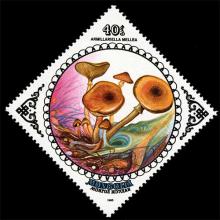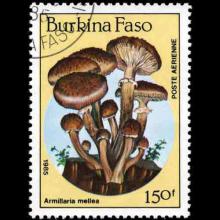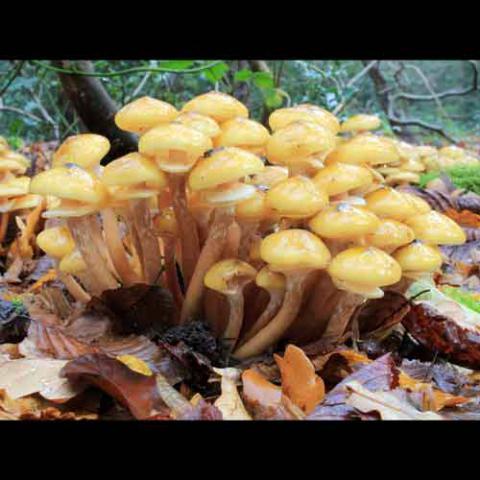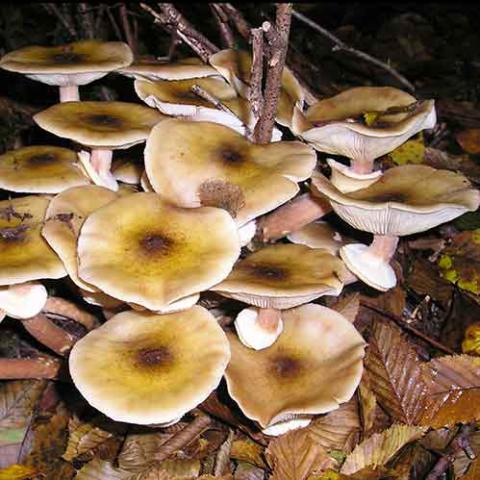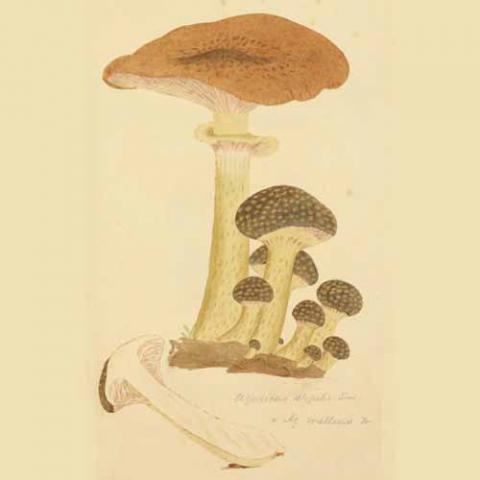NAMES
TAXONOMY
FUNGI ID
THERAPEUTIC
Mongolia
Issued:
Stamp:
Armillaria mellea
Burkina Faso
Issued:
Stamp:
Armillaria mellea
Bulgaria
Issued:
Stamp:
Armillaria mellea
Mongolia
Issued:
Stamp:
Armillaria mellea
Burkina Faso
Issued:
Stamp:
Armillaria mellea
Bulgaria
Issued:
Stamp:
Armillaria mellea
Mongolia
Issued:
Stamp:
Armillaria mellea
Burkina Faso
Issued:
Stamp:
Armillaria mellea
Bulgaria
Issued:
Stamp:
Armillaria mellea
Glow in the dark
by Mike Kay, The Frederick County Forestry Board, Oct 25, 2015
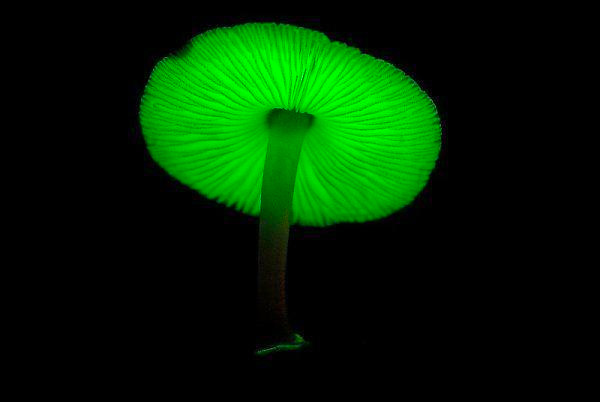
With decreasing day length, we often find ourselves stumbling around in the dark in the early morning hours or when we return from work at night. It is then that little objects that glow in the dark are visible on the ground. There are a number of plants and insects, such as the firefly, that exhibit bioluminescence (glowing in the dark,) light created by living things as a result of certain enzymes mixing with oxygen. Unlike fire, light bulbs, or flames, however, bioluminescence produces no heat. Some molds, bacteria, slimes, yeasts, and fungi are bioluminescent. Of the nearly 100,000 species of mushrooms, there are 71 known species that exhibit this light-producing property.
In North America, there are five species of mushrooms that glow in the dark. One of the most common mushrooms to exhibit this trait is Armillaria mellea, or the Honey mushroom, in which only the mycelium under the mushroom cap glows. In others, most of the plant glows, like the Jack-o-lantern mushroom. The philosopher, Aristotle, first described luminous wood in 382 B.C. Over the years, many scientists studied bioluminescence in both plants and animals. One remaining question is why it would be advantageous for fungi to glow in the dark? Some speculate that it attracts insects, which helps dispersal of spores. Whatever the reason, these tiny little night lights make an interesting backdrop to the landscape this time of year.
Genus species (Fungi): Armillaria mellea
Armillaria mellea, commonly known as honey fungus, is a basidiomycete fungus in the genus Armillaria. It is a plant pathogen and part of a cryptic species complex of closely related and morphologically similar species. It causes Armillaria root rot in many plant species and produces mushrooms around the base of trees it has infected. The symptoms of infection appear in the crowns of infected trees as discoloured foliage, reduced growth, dieback of the branches and death. The mushrooms are edible but some people may be intolerant to them. This species is capable of producing light via bioluminescence in its mycelium.
Armillaria mellea is widely distributed in temperate regions of the Northern Hemisphere. The fruit body or mushroom, commonly known as stump mushroom, stumpie, honey mushroom, pipinky or pinky, grows typically on hardwoods but may be found around and on other living and dead wood or in open areas.
Reference: Wikipedia, Britannica
Illustration: Wikimedia

